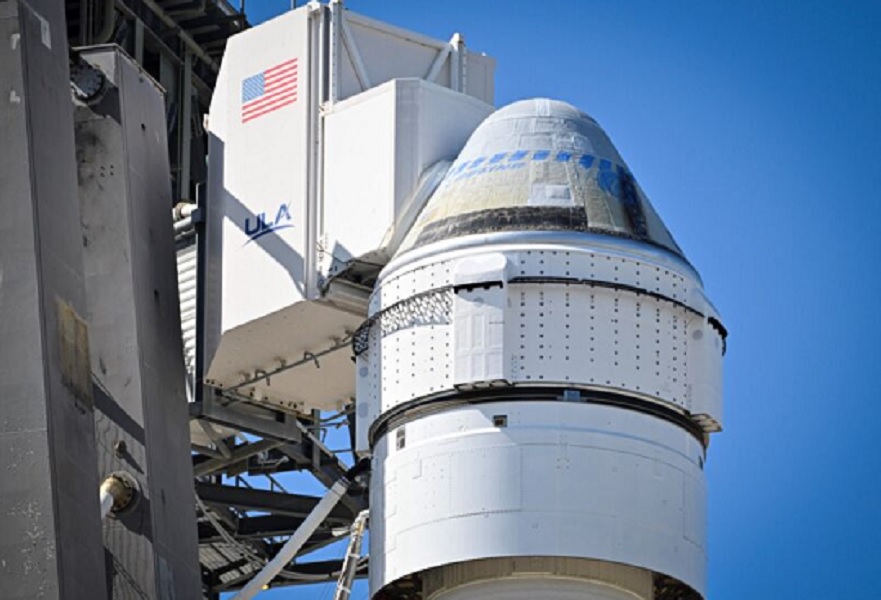
Boeing Starliner ready to depart for the space station (Miguel J. Rodriguez Carrillo/AFP)
Problems with the spacecraft could force a mission into space, expected to last just over a week, into early next year.
NASA astronauts Barry Wilmore and Sunita Williams, members of an eight-day mission to the International Space Station (ISS), could remain in space until 2025 due to problems with the propulsion system of the Boeing Starliner spacecraft they were on that was being transported to the station.
In this way, Boeing's crisis, so evident in the civil aircraft industry, reaches space and poses new problems, as its designers and managers are forced to assume.
These are engineering problems in the project, in manufacturing processes and in quality control, seen in the civil field of the North American aerospace giant, which ended up being repeated in the development of the Starliner and its subsequent disruption in transporting astronauts.
The spacecraft has already encountered propulsion problems during its flight to the orbital platform, such as leaks of helium, an inert gas used to pressurize the system, and power losses in the reaction control system thrusters, which are necessary to steer the spacecraft during its flight from the station and return to Earth and also prepare it for re-entry into the atmosphere.
This means that even though the astronauts arrive safely at the ISS, they may need an alternate spacecraft to return.
At a news conference on Wednesday, August 7, the agency provided an update on the condition of the two astronauts, who have been in space for 63 days — nearly seven weeks longer than expected — after the June 5 launch.
Starliner spacecraft unable to separate
NASA officials said it will be determined by mid-August whether it is safe for Wilmore and Williams to return to the space station on the same ship that took them to the International Space Station. That would require the astronauts to stay on the station longer until Starliner can undock.
The spacecraft currently does not have the ability to automatically undock from the International Space Station, so it will need to update its software, in addition to what Boeing's flight control team will need to do to get “additional information,” said Steve Stich, the agency's commercial crew program manager.
Stich noted that Wilmore and Williams are being considered for a return trip aboard the SpaceX Crew Dragon spacecraft, which will launch to the International Space Station next month, with only two of the four crew members assigned. The ship will carry extra spacesuits for the astronauts.
However, these must remain on the station until February of next year, when the Crew Dragon crew returns to Earth. Stich noted that this alternative plan has not yet been formally approved. He also declined to say which of the two astronauts scheduled to fly on that mission, known as Crew-9, would be excluded.
Boeing must undergo certification process.
Technical problems have been recurring at Boeing, which has reported a $883 million loss in Starliner production through October 2022. “There are increasing difficulties in developing and flying an airplane, and we are very close,” Boeing vice president and program manager Mark Nabi tried to justify the situation, saying. “That’s part of the problem of dealing with these kinds of problems,” he added, trying to minimize the disaster.
Upon completion of the mission, Boeing will undergo a rigorous certification process before Starliner is cleared to perform regular crew transport missions for NASA, as specified in the contract.
The company needs to start flying regular crew missions to start getting paid for the service. In this new relationship between NASA and the aerospace giants, they get a set amount to develop the spacecraft. And NASA, instead of owning the spacecraft outright like the space shuttles, starts paying for the rotation of crew flights to the International Space Station.
Regarding civil aviation problems, Boeing agreed in early July to plead guilty and pay a fine of hundreds of millions of dollars in a case related to the fatal accidents that occurred with the 737 Max model.
According to the US Department of Justice, the company violated an agreement that would have protected it from lawsuits related to tragedies that occurred in Indonesia and Ethiopia in 2018 and 2019, which resulted in the deaths of a total of 346 people.
Prosecutors have accused the US aviation giant of misleading regulatory agencies about the 737 Max and the pilot training requirements needed to fly the model.

“Coffee trailblazer. Social media ninja. Unapologetic web guru. Friendly music fan. Alcohol fanatic.”

